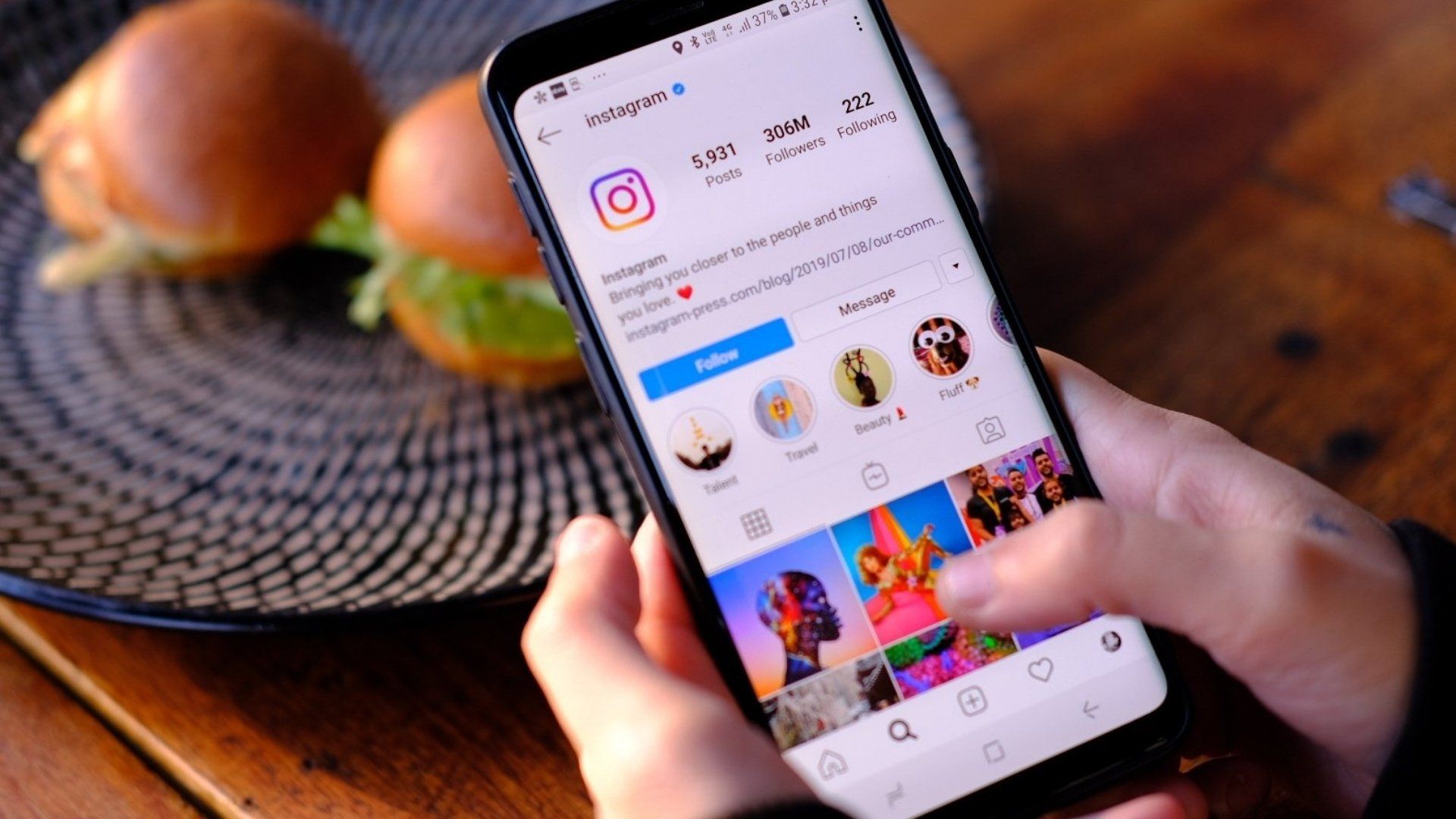Blog
True North Technologies Blog
Search results for 'branding' (6)

Looking to grow your audience engagement? A good strategy is to develop a relationship with your desired audience. One way to build authentic connections is to encourage and utilize User Generated Content (UGC). In this blog, we’ll answer the question “What is UGC” and its unsung impact. What is User Generated Content (UGC)? User Generated Content (UGC) is any form of content—text, videos, images, reviews, etc.—created by consumers rather than brands. This type of content is usually shared on social media platforms, review sites, and other online channels. Unlike traditional marketing content created by the company, UGC comes directly from customers who have experienced the product or service firsthand. Types of User Generated Content 1. Reviews and Testimonials: Customer feedback and testimonials that is shared on platforms like Google Reviews, Yelp, and Amazon. 2. Social Media Posts: Photos, videos, and posts created by customers on platforms like Instagram, Facebook, Twitter, and TikTok. 3. Blog Posts and Articles: Content created by customers or influencers about their experience with a brand’s product or service. 4. Videos: Unboxing videos, tutorials, and reviews posted on platforms like YouTube. 5. Photos: Images shared by customers showcasing their use of a product, often tagged with the brand’s hashtag. The Unsung Impact of UGC UGC holds a huge amount of power in digital branding and can impact a brand’s reputation, reach, and revenue. Here’s how: 1. Authenticity and Trust Consumers today want authenticity and trust peer recommendations more than traditional advertising. UGC gives consumers genuine, unbiased reviews about a product or service, making it a trusted source of information for potential customers. When people see real users sharing their positive experiences, it builds trust and credibility for the brand. 2. Increased Engagement UGC encourages interaction and engagement. When customers create and share content about a brand, it sparks conversations and creates a sense of community. This sort of engagement increases a brand’s visibility and strengthens customer loyalty. 3. Cost-Effective Marketing Creating high-quality marketing content can be expensive and time-consuming. UGC, on the other hand, is a cost-effective way to generate content. By using content created by your customers, you can save on production costs and divide your resources into other relevant areas of your marketing strategy. 4. SEO Benefits UGC can help boost your SEO efforts. Search engines value fresh, unique content, and UGC provides just that. Reviews, social media posts, and other forms of UGC generate organic traffic and improve your website’s search engine rankings. Also, user-generated reviews often contain keywords that potential customers are searching for, boosting your visibility in search results. 5. Social Proof Social proof is a psychological phenomenon where people conform to the actions of others. UGC serves as powerful social proof, showing potential customers that others are enjoying and endorsing your product. This can influence purchasing decisions and drive conversions. 6. Valuable Insights UGC gives valuable insights into customer preferences, behaviors, and opinions. By analyzing this content, brands can gain a deeper understanding of their audience, identify trends, and make informed decisions to improve their products and services. How True North Technologies Can Help At True North Technologies, we specialize in helping businesses create consistent growth . By understanding and leveraging the impact of UGC, you can transform your marketing strategy and achieve real results. Our team of experts can assist you in curating, managing, and using UGC to build authenticity, engage your audience, and drive growth. If you’re ready to take advantage of UGC for your business, contact True North Technologies today to schedule a meeting.

Evolving, effective digital marketing has become synonymous with vibrant small businesses. A key player in this is digital branding that dynamically fits any company. Let’s unravel why digital branding is the linchpin of any successful marketing strategy for small businesses. 1. Establishing a Distinctive Identity In a world where attention is a scarce commodity, establishing your company’s distinctive identity is the first step toward success. Digital branding, beyond mere logos , slogans , and taglines , is about crafting a narrative that sets a business and its brand apart from the rest. A memorable brand identity attracts potential customers, leaves a lasting impression, and lays the foundation for customer trust and loyalty. 2. Navigating the Social Media Landscape Social media platforms have become our digital age’s bustling marketplace and primary touchpoints. Many small businesses (in Lincoln and beyond) must navigate this ever-expanding terrain if they ever hope to effectively reach their audience. Digital branding acts as a guiding compass that helps businesses present themselves authentically across diverse platforms. From Facebook to LinkedIn, a cohesive digital brand strategy ensures that businesses amplify their connections beyond their local community. 3. Building Trust and Credibility In an era where trust is the anchor of consumer decisions, digital branding is the bedrock of building trust and credibility. For small businesses, this is a vital aspect of establishing a strong foothold in their markets. A well-crafted digital brand image, consistent across various online touchpoints , instills confidence in potential customers. Building trust through digital branding not only attracts new customers but also cultivates a loyal customer base, essential for sustained success in the local business landscape. 4. Harnessing the Power of SEO Visibility is the lifeblood of online success, and digital branding is intricately linked with effective Search Engine Optimization (SEO) performance. Small businesses need to be not just seen but discovered by the right audience. Digital branding, when aligned with SEO strategies, ensures that businesses in Lincoln maximize their online visibility. By optimizing content , keywords, and online channels to reflect the new digital brand, businesses can enhance their chances of being found by potential customers. 5. Engaging in Conversations, Not Transactions The best digital branding is not centered around transactional relationships but focuses on building meaningful connections. Through storytelling, interactive content, and a humanized online presence, businesses can engage in conversations with their audience. This two-way communication not only enhances customer loyalty but also provides valuable insights to refine your brand strategy. 6. Maximizing Return on Investment (ROI) For any small business and their marketing budget, every penny counts. Digital branding, when executed strategically, could significantly impact the return on investment (ROI). True success is not just about visibility but also about converting that visibility into tangible results. By aligning digital branding efforts with measurable outcomes, small businesses can contribute their marketing dollars to the bottom line, making every investment a step towards sustained growth and success. 7. Adapting to Evolving Consumer Behavior Consumer behavior, influenced by quickly changing trends and technological advancements, continually shapes the digital landscape. A well-defined digital brand reflects current consumer expectations while anticipating future shifts. Just as a sailor adjusts course to counter changing winds, businesses can align their digital branding with evolving consumer behavior. 8. Fostering Brand Consistency Across Channels Maintaining brand consistency requires a unified and cohesive brand image. Whether a customer encounters the brand through social media, a website, or email campaigns , digital branding ensures a seamless experience. Consistency reinforces a brand’s identity, building a sense of reliability and familiarity with the audience. Great marketers recognize this and emphasize a harmonized digital presence. Just as a song’s harmony needs consistent notes, customer interactions need consistent brands. 9. Leveraging User-Generated Content for Authenticity Encouraging customers to share their experiences, testimonials, and creative expressions fosters a genuine connection between the brand and its audience. User-generated content not only adds a human touch but also serves as a testament to a brand's real-life impact on its customers. This organic content, spread across various digital platforms, acts as a living testimony to the brand's authenticity, influencing potential customers and creating a community of brand advocates. 10. Cultivating Long-Term Customer Relationships Finally, digital branding goes beyond creating a generic online presence; it involves tailoring experiences to meet individual customer needs. By leveraging data and insights, marketers can personalize their clients’ digital interactions, from targeted email campaigns to customized website content. This tailored approach can strengthen customer satisfaction and a brand’s emotional connection with its audience. Digital Branding is our Bread & Butter, Focus on Yours If you're curious about the magic of digital branding and how it can give your business a real lift , shoot us a message! Our friendly team is here, not just to offer services, but to understand your unique story and goals. Your success is our passion , and we're looking forward to connecting with you soon!

Branding is an important, ongoing process for any small business. It involves creating an identity, building a reputation over time, and, of course, designing a logo. However, this is no small feat. A logo represents a company at a glance, incorporating many strategic elements into a cohesive whole. Whether you’re just getting started or looking to refresh your image, there are some key details to keep in mind. The following are our top five recommended steps for designing your small business logo.

Social media platforms like Instagram are great places to start building a brand. The barrier to entry is low, and with over one billion active monthly users, you’re sure to find attentive audiences. In fact, it’s estimated that the number of Instagram users in the United States alone will grow to over 127 million in 2023. The key to success is creating a strategic content plan, posting regularly, and avoiding common pitfalls along the way. The following are some of our top recommendations for branding on Instagram.

Over time, our understanding of meaning, media, and symbolism has become incredibly useful, and those who leverage this understanding tend to garner unmatched attention, loyalty, and recognition. In the marketing field, this is known as branding, the continuous process of creating, maintaining, and communicating organizational identity. Branding is an absolutely critical component of any business model and we have chosen to highlight a few key reasons why it’s so essential.

Digital branding refers to the creative, strategic process used to design and build a brand online through websites , mobile apps , social media, and internet advertising. Growing and maintaining your brand digitally is incredibly important when establishing a business in the 21st century. Digital branding enables any company to make its presence known anywhere- even in the palm of your customers’ hands. Branding vs. Marketing The terms “branding” and “marketing” are often used interchangeably in this context. There is some overlap; however, while digital branding focuses on providing continuous value through inspiring loyalty to a brand identity, digital marketing is all about finding new customers and converting leads to sales. Unlike traditional advertising, digital branding seeks to engage with you directly. It’s prioritizes fostering relationships and encouraging positive feedback rather than persuading people to make a one-time purchase. Branding distills everything about a company into a concise, memorable message that people will recall and continue to associate with the business. Messages don’t necessarily have to be complicated to resonate deeply. For example, Nike’s “JUST DO IT” continues to be impactful, despite its simplicity. Digital Branding Essentials Company goals, values, and messaging play major roles in digital branding. Creative elements like logos, slogans, websites, mobile apps, and social media also factor into the process. There are countless components of excellent digital branding, but we’ve chosen to cover only the essentials here. 1. Logo A logo is often the first thing a customer will associate with a brand. Effective logos match the values and personality of a business, industry, and target market. The design must be memorable enough to leave an impression, but not so complicated that potential customers are left confused. Check out logos in your industry to see what competitors are trying. Choose colors wisely, as the right logo color gives a brand character and can subtly influence customers. This color scheme should be standardized across all physical and digital platforms, from business cards to email signatures. Keep in mind that digital platforms require images to be specific sizes and scales. The best logos will work well as buttons, app icons, cover photos, profile pictures, as well as email headers and footers. 2. Identity Knowing and defining exactly who you are is a major challenge of digital branding. Brand identity involves communicating company goals, values, and vision, both internally and externally. Therefore, effective branding will exemplify what a company does and believes while resonating with customers’ needs and desires. Identify your brand by asking these questions: What are your values? Who are you as a company? Who is your ideal customer? What is your mission statement? The tone of voice must also align with the business and the services it offers. Retailers would do well to keep things playful and popular, while medical suppliers should probably tone things down and remain professional. Try to highlight solutions and positivity at every available opportunity. 3. Website If your logo is the sign for your business, your website is the digital storefront. When a customer wants to know anything about your business, from physical locations and hours of operation, to product listings or contact information, they probably won’t be digging through the yellow pages. They’ll Google your brand, hoping to find information quickly and easily. The best websites take advantage of search engine optimization ( SEO ) to rank highly on search result pages. For more on SEO, check out our blog . Effective websites are fast, simple, and user-friendly. Streamline the design and maintain your brand identity by using a consistent theme that matches or complements your logo. Foreground your brand name and essential details with bold, legible fonts, and keep pages sharp and succinct by excluding unnecessary information. These days, the surest way to lose a potential customer is with a slow, disorganized website.
Interested in valuable marketing content?
Sign up for our weekly newsletter!
